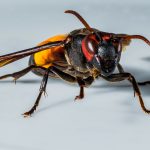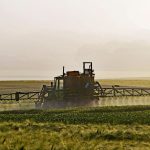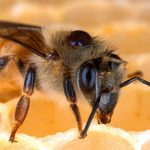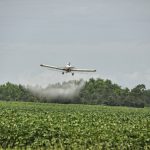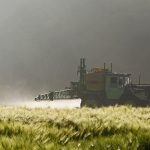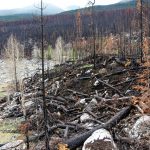Honeybees are threatened with extinction
Approximately one third of our food is dependent upon honeybees, and honeybees are disappearing at an alarming rate all over Europe and in other parts of the world.
On average bee-keepers lose about 30% of their honeybee colonies each year. Without renewal by bee-keepers there would be very few, if any, colonies left. The current issues related to honeybees are much bigger then bee-keepers alone can handle, indeed the issues are extremely serious and should concern society as a whole.
The bee colony loss phenomenon does not only touch honeybees (the bees that produce honey) but also thousands of other species of insects including solitary bees, wild bees and bumblebees. Without bees life stops! (almost). Bees are the pollinators of choice and without them the amount and variety of food available will be significantly reduced, specifically, bees are pollinators of the most nutritious and tasty foods that we consume.
All types of food are at risk, cereals, fruit, vegetables, fine herbs and wild flora and fauna, without mentioning many other non comestible plant species.
Pesticides
It is highly probable that pesticides are the main threat to honeybees today. Neonicotinoids are a class of pesticide particularly dangerous to bees, they pollute water courses and groundwater as do other types of pesticides used in local authority run programmes to control mosquitoes and other insects.
We’ve lived with pesticides for decades, but in the past they were sprayed onto crops only when needed, when pests were identified and when cultures were not in bloom. Neonicotinoids, on the contrary are used massively, systematically and in a preventive manner. Neonicotinoids work by either wrapping the seed in a layer of pesticide, drenching the soil or spraying. In all cases the entire plant is transformed into a “bee kliller” because not only are the leaves covered in pesticide but transported by the plant’s vascular system (circulatory system), the stem, flowers, fruit, nectar and pollen are also contaminated. This type of pesticide kills insects at a very low dosage, and even when not enough kill directly they reduce the bee’s capacity to reproduce and disturb their ability to navigate, thus preventing them from returning to the hive. The net result being a decline in number and the death of honeybee colonies.
It is important to mention the mosquito control programmes in some countries, namely in the south of Europe in the countryside surrounding larger urban areas and holiday resorts. The systematic use of non-selective pesticides ordained by local authorities using taxpayers money under the guise of mosquito or insect control is widespread. Pesticides are sprayed by helicopter or terrestrial means over forests, fields, wild areas and natural zones around urban areas. In my area it is the publicly funded ” l’Entente Interdépartementale de Démoustication” (EID) that is responsible for such use. Their web site mentions the use of non-selective pesticides although the safety notices and instructions do not explicitly state that they kill bees. It is curious that in Europe, (based on the manufacturers notices issued in the UK and France) the safety notices do not specifically mention “kills bees”, whereas for the same product sold in Australia the phrase “kills bees” appears clearly. (This specific example concerns the pesticide « Aqua K-Othrine commercialised by Bayer®).

Pollution – Pesticides are found in rain and water courses (bees need water as much as we do). Any product (pesticide, herbicide etc.) that mentions “may be dangerous to aquatic life” is often dangerous for insects, including bees that need water over anything else.
Climate change – Prolonged dry spells leads to fewer (or no) flowers, and consequently a lack of food for the bees. Prolonged rainy spells mean the bees cannot get out and forage, diseases are transported throughout the hive as bees cannot maintain hygienic conditions, and nectar is diluted meaning more work for the bees to collect and dehumidify the resulting honey.
Urbanization and increasing urban density – There is a mechanical effect on biodiversity and food sources for bees caused by the urbanization of previously wild terrain and the increasing density of existing urban areas (for example where parks and gardens are turned into concrete covered streets or dwellings).
Destruction of Natural habitat and the reduction in biodiversity – In both urban and countryside areas there is a regular and massive reduction in biodiversity (for example less hedgerows, roadside grass verges too narrow and cut too often). In towns and cities there are less trees, gardens are becoming smaller and there are less parks and green areas, the tendency for artificial grass and similar household practices etc. does not help either.
Agricultural practices that respect the environment would surely help the bees. Monoculture (the cultivation of a single crop in a given area, usually over large areas), significantly reduces biodiversity by providing abundant and massive quantities of nectar and pollen in a very short period of time and then nothing for the rest of the season. Such practices are often linked to the heavy use of herbicides to treat organically modified crops resistant to herbicides, killing wild flowers and other “weeds” in the vicinity (i.e. Glyphosate use ).
Also, our soils are “empty” of any nutrients, able to produce crops only because of artificial fertilizers and other phytosanitary products that compromise or weaken the immune systems of honeybees.
Diseases and predators – the introduction of foreign parasites and viruses (e.g. varroa, nosema) along with new predatory species such as the Asian hornet, against which there are no known European predators and against which honeybees have no defense, continually reduces honeybee populations. Bee-keepers can treat their honeybee colonies against varroa mites, however there not yet a product that is 100% effective or without undesirable side-effects.
The Asian hornet is a real danger for honeybees, as honeybees are the Asian hornets preferred food! they remain stationary in flight outside the hive entrance, preventing the bees from leaving the hive. the bees end by dying from stress, hunger or thirst. This species attacks as a group and can destroy entire colonies of honeybees, contrary to European honeybees that do not eat honeybees.
Bee-keeping practices – Could we, bee-keepers change our practices to help the bees? For example could we select a more rustic race of bees, change the way we treat varroa mites, use wax honeycomb with a smaller cell size , or even abandon the use of wax foundation altogether?
A combination of factors – We know that there are a great many threats against honeybees. It is highly probable that the loss of honeybee colonies is linked to a combination of factors, although there is little doubt that some are having a bigger impact than others.

